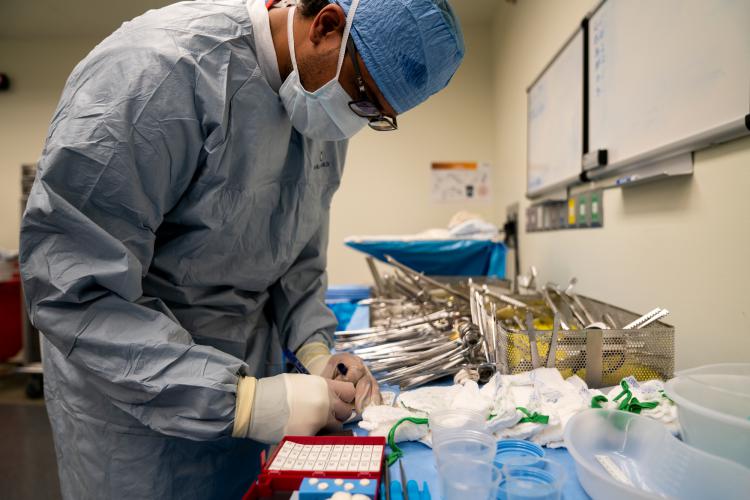
During the 2018 calendar year, approximately 1.78 million surgical tools were put to use in JPS Health Network operating rooms, used to perform surgeries that saved and improved lives.
Not a single one of them went unaccounted for.
“We work very hard on creating a culture of chasing zero”, said Staci Medina, manager of Surgical Services. “The only way you can do that is practice. We practice doing things the right way every single time, never cutting corners.”
During an operation that can go on for hours, not only might a surgeon use dozens of metal instruments include scalpels, tweezers, clamps, scissors and needles, he or she may rely on modern accessories including suction tubes with interchangeable tips, cutting laser guides and measuring tools. Some of the hardest things to keep track of are dozens of disposable devices including tiny surgical sponges, some the size of postage stamps, that become virtually invisible within the body cavity once they’ve been used. It’s extremely difficult to keep track of it all. But that doesn’t stop the people who work in the operating room from striving for perfection.
According to the Institute of Medicine, 250-300 surgical tools are used during the average operation while as many as 600 can be required during more complicated cases. Across the United States, on average, a surgical device is left behind in one of every 1,500 cases, according to the Patient Safety Monitor Alert. Usually, it’s not a threat to the patient’s health. They just go on with their lives as normal. It’s very rare for a patient to have to undergo a second surgery to retrieve a lost tool. But operating room team members don’t take even consequence-free, simple errors lightly.
“It’s human to make mistakes,” said Lauren Evans Assistant Manager, Operating Room/Anesthesia Support. “But we work together in effort to overcome that. We work as a team to double and triple check each other and we all take safety very seriously and very personally. Everyone holds themselves the highest standards.”
Dr. Trisha Swift, Chief Quality Officer at JPS, said procedures have been carefully honed to maximize patient safety.
“Mistakes and medical errors rarely happen because of an ill intended healthcare worker. Rather, these breakdowns are due to system level improvement opportunities,” Swift said. “Making the healthcare ‘system’ better requires a lot of hard work by a multidisciplinary team whose members are invested in designing a high quality and safe care delivery system.”
Inside the surgical suite at JPS, sterilized instruments are stored in two large rooms, each the size of a two-car garage. The rooms are lined with neatly-arranged metal shelves stacked with plastic baskets filled with hundreds of different specialized tools kept in plastic packaging, sterilized and ready for use at a moment’s notice. When it’s time for an operation to start, the tools are retrieved from their baskets and taken to the operating room where they’ll be used. There they’re spread out on a table and sorted through while inventory is taken. One person has a checklist and reads out the name of the individual tools while a second picks up the tools in question to show them to their partner and calls out how many of each individual item are on the table.
Further complicating the practice of accounting for all the tools is the fact that not all doctors like to use exactly the same equipment for a particular operation. So, a preference card is kept for each surgeon, detailing the things they want and need to be in the operating room.
When the operation is coming to its end, the tools are counted – twice. Once when the body cavity is closed and then again when the skin is closed. There are no exceptions to this practice. Not even when the surgeon is in a rush to make it to his next case. Everything has to be accounted for before the patient can be closed up.
“The job the people in this department do is incredible,” Evans said. “It’s a great team and every one of its members is totally dedicated to giving their job 100 percent every single day.”
